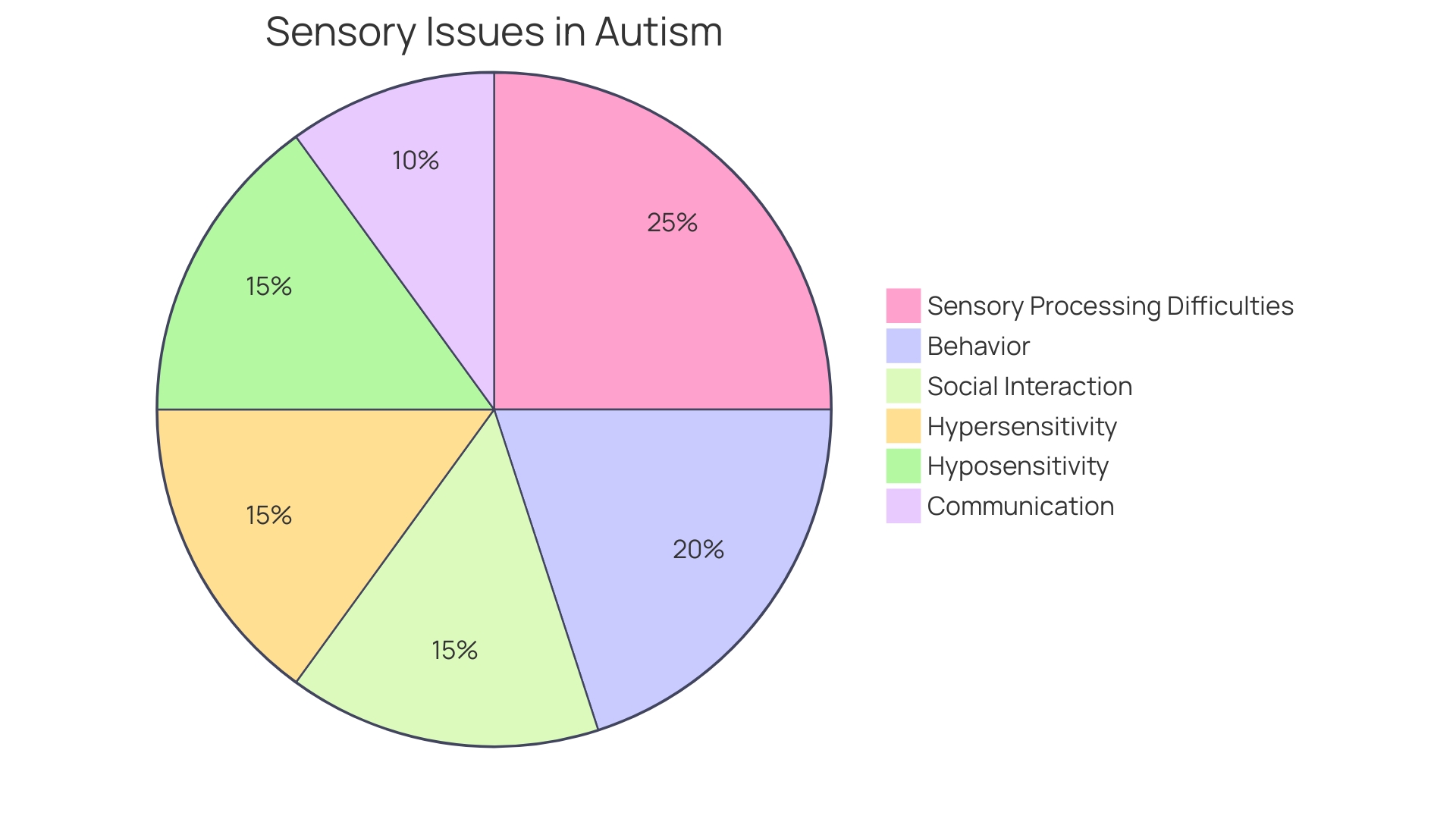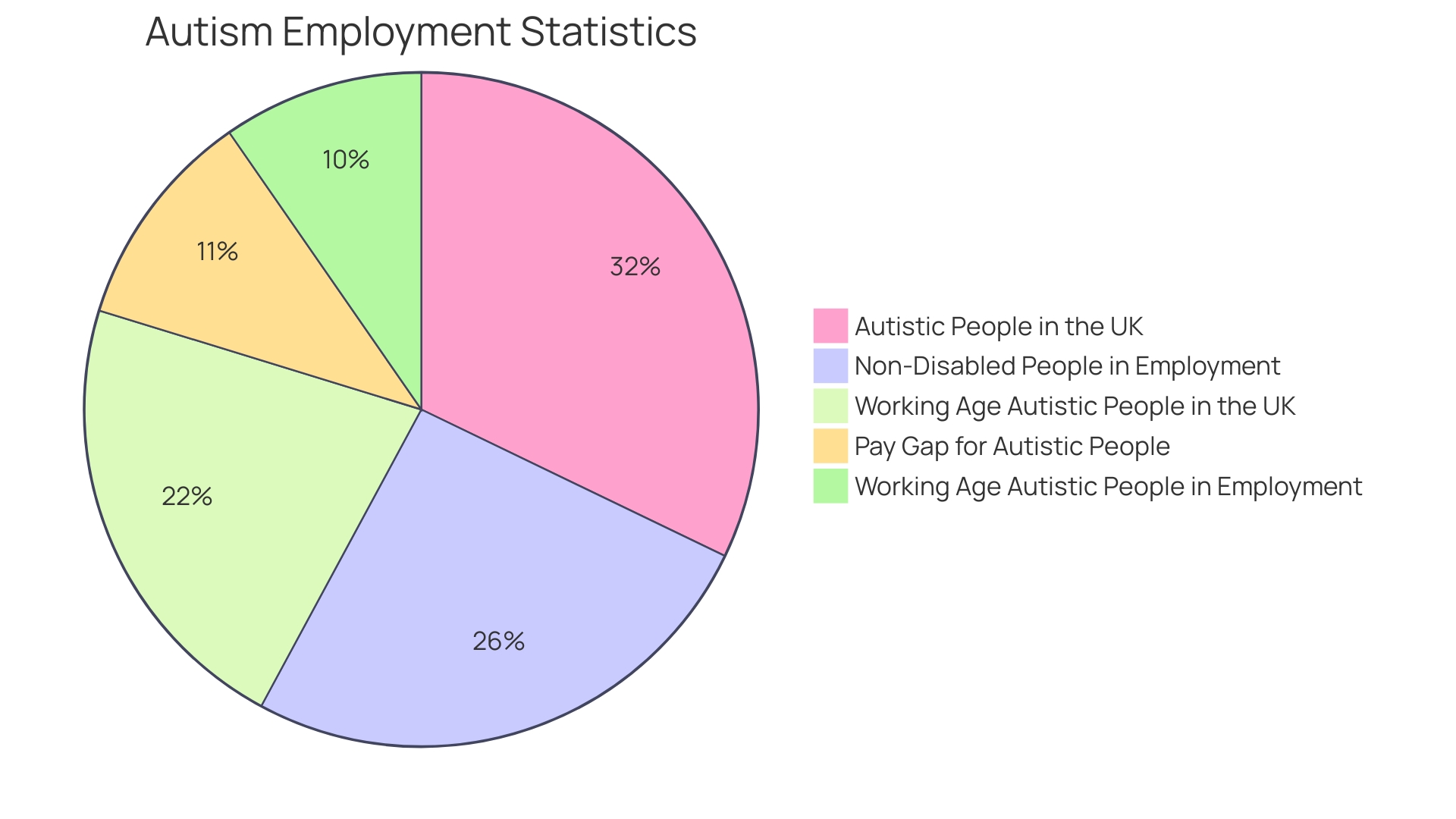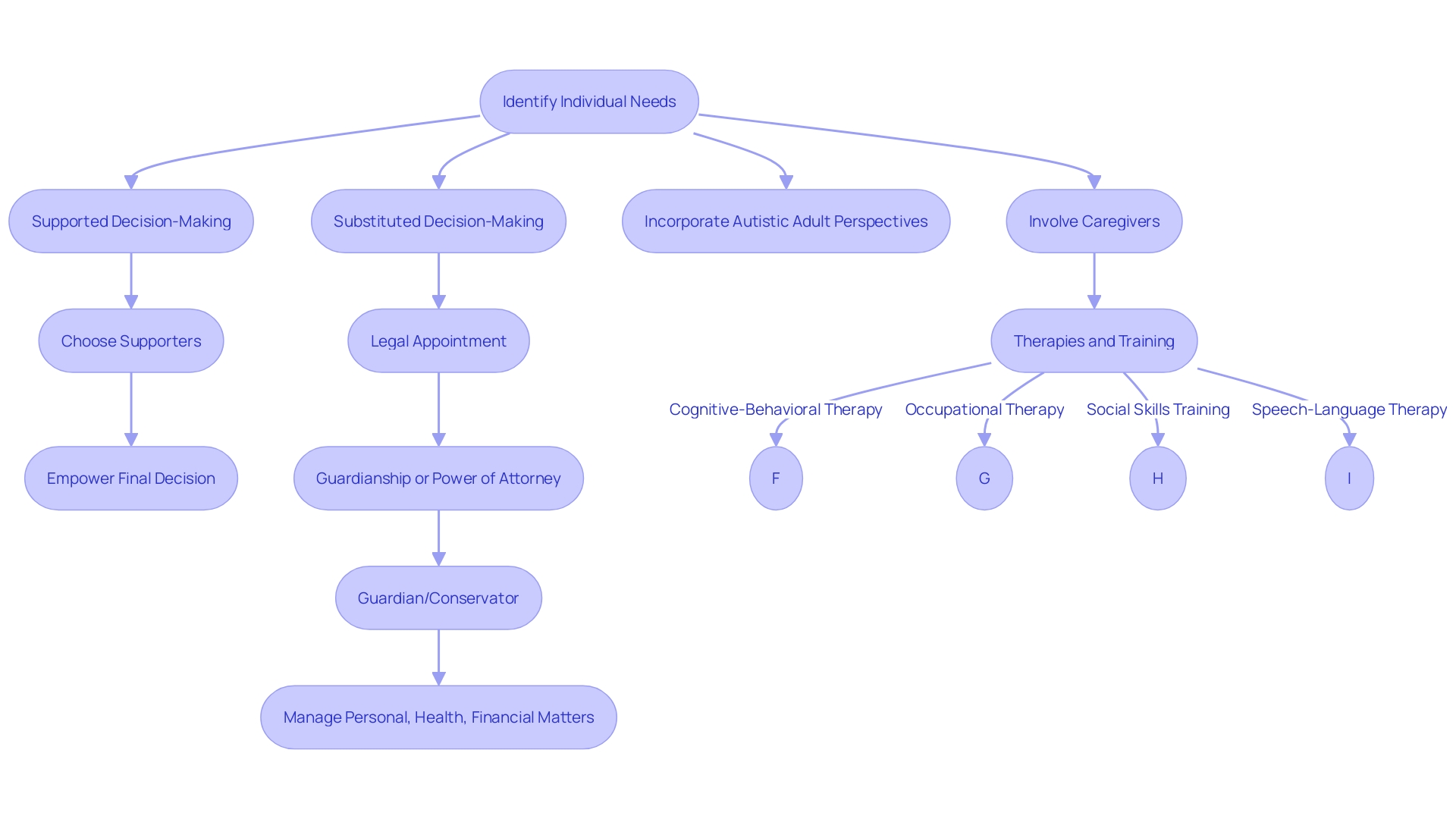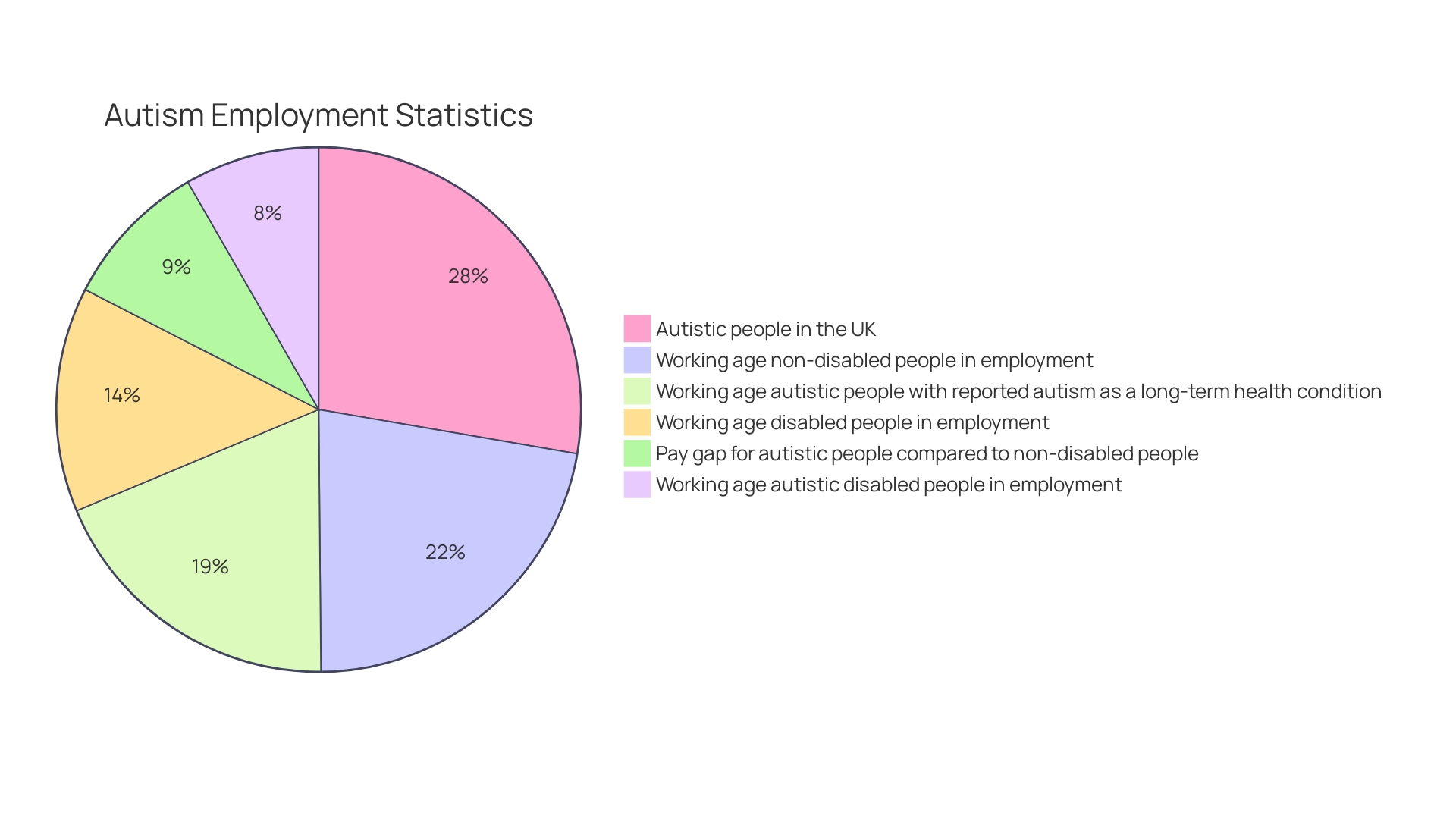Introduction
Autism spectrum disorder (ASD) is a condition that affects individuals across various stages of life, including adulthood. While autism is often diagnosed in childhood, it is crucial to recognize that adults can also be affected by ASD. Understanding the distinct indicators of autism in adults is essential in providing the necessary support for their well-being.
Recent research suggests that 1 in 45 adults in the United States have been diagnosed with ASD, but many may remain undiagnosed or misdiagnosed due to factors such as a lack of awareness and historical diagnostic criteria that did not fully capture the spectrum. Recognizing the common signs of autism in adults, such as challenges in social communication and interaction, is vital for those who may not have recognized these signs earlier in life. The conversation around autism diagnosis in adults has evolved, with the recognition of self-diagnosis and initiatives aimed at improving healthcare resources for the adult autistic population.
Dispelling misinformation and providing accurate information and education about autism for adults is critical in fostering an inclusive society that supports the well-being of autistic individuals.
Recognizing Autism Symptoms in Adults
Autism spectrum disorder (ASD) is a neurodevelopmental condition that manifests across a wide range of ages and stages in life. While the diagnosis of autism is often made in childhood, it is equally important to acknowledge that ASD can—and does—affect adults. The presentation of autism in adults may differ from the signs observed in children, emphasizing the need for awareness of these distinct indicators. Understanding these signs enables adults to seek out and receive the support that enhances their ability to lead fulfilling lives.
Recent research highlights that 1 in 45 adults in the United States have been diagnosed with ASD. However, due to various factors including a lack of awareness and historical diagnostic criteria that did not fully capture the spectrum, many adults with autism may remain undiagnosed or have been misdiagnosed in the past. Learning about the common signs of autism in adults is crucial for those who, throughout their lives, have not recognized these signs or realized that their experiences could be related to autism. Key characteristics to be aware of include persistent challenges with social communication and interaction, as well as restricted and repetitive patterns of behavior.
The conversation around autism diagnosis in adults has evolved, with many in the autistic and neurodivergent community advocating for the validity of self-diagnosis. This shift comes in light of the numerous shortcomings in the medical testing model for autism, which often leads to inconclusive results for adults seeking a formal diagnosis. Therefore, if an official diagnosis isn't necessary for the individual to access needed support, undergoing the process may not be essential. This perspective is bolstered by initiatives aimed at improving the quality of medical care and resources for the adult autistic population, acknowledging their presence and needs in healthcare systems.
It is essential to dispel misinformation surrounding autism, especially given that recent studies have found a significant portion of autism-related content on popular social media platforms to be misleading or incorrect. Accurate information and education about autism, especially for adults, are critical in supporting the well-being of autistic individuals and fostering an inclusive society.
Common Characteristics of Autistic Adults
Adult women with autism often fly under the diagnostic radar due to a variety of factors, including stereotypes and gender biases. Traditionally, autism research focused on males, leading to a clinical bias that overlooks how the condition manifests in females. As a spectrum condition, autism affects individuals differently, with symptoms ranging from mild to severe. Characteristics in adult women can include challenges in social communication and interaction, such as difficulty reading social cues or carrying on a conversation. Additionally, repetitive behaviors and intense interests are common, though they may be subtle compared to their male counterparts. Sensory sensitivities are also prevalent, with some women experiencing extreme reactions to certain textures, sounds, or lights.
Although self-diagnosis is accepted within the autistic community, formal diagnosis can be inconclusive due to the limitations of medical testing. However, a recent increase in awareness and screening has led to more adults being diagnosed, with current estimates suggesting that as many as 1 in 36 individuals may be on the spectrum. Early diagnosis is crucial as it grants access to tailored resources and support. The importance of recognizing autism in adult women cannot be overstated, as misdiagnosis or lack of diagnosis can lead to a lifetime of misunderstanding and inadequate support.
Innovations in diagnostic methods, such as machine-learning models like AutMedAI, show promise in identifying patterns indicative of autism without extensive assessments. This tool has demonstrated an accuracy rate of about 80% for children under two years old. While this technology is geared toward early childhood screening, it reflects a growing understanding of the nuanced ways autism presents itself, which could eventually benefit adults seeking diagnosis.
Adults diagnosed later in life, like CEO and mother Heather Florio, describe the experience as life-changing, allowing for self-acceptance and a better understanding of personal challenges. Despite the scarcity of research on autism in adulthood, especially in older adults, it is clear that the condition carries a set of unique challenges during life transitions, such as entering the workforce or starting a family. These challenges are often compounded by co-occurring physical and mental health conditions, which can significantly impact quality of life and life expectancy. As the conversation around autism continues to evolve, it's critical to recognize and support the diverse experiences of autistic adults, particularly women, to foster a more inclusive and understanding society.
Social Interaction Challenges
Adult women with autism can face significant hurdles in social situations, which might include difficulties interpreting and responding to social cues, such as body language and facial expressions. Maintaining eye contact or taking part in back-and-forth conversations may also pose challenges, potentially leading to a sense of isolation or exclusion from social circles. Despite the lack of extensive research on adult autism, particularly in older adults, emerging studies suggest that adult life for someone with autism involves similar transitional challenges that all individuals experience, but with added layers of complexity due to sensory sensitivities, social communication nuances, and executive functioning difficulties.
Recent shifts in the portrayal and understanding of autism, such as the social benefits observed from participation in structured activities like role-playing games, highlight the capacity for autistic adults to find belonging and develop confidence in social settings. Furthermore, the concept of the 'double empathy problem' emphasizes that communication struggles are bilateral, with neurotypical individuals also facing challenges in understanding autistic communication styles. This underlines the importance of mutual effort in fostering understanding and connection.
As research evolves, it's becoming clear that autistic adults often devise creative and resourceful strategies to navigate life's challenges. By leveraging interests into careers or tailoring environments to suit sensory needs, they demonstrate adaptability and resilience. With increased awareness and tailored support, autistic adults can build on their unique strengths and experiences to establish fulfilling social relationships and integrate more seamlessly into various aspects of life, including work, independence, and community involvement.
Verbal and Nonverbal Communication Difficulties
Adult women with autism may navigate a complex array of social challenges, particularly in the realm of communication. Expressing oneself through language can be a daunting task for some, as they search for the appropriate words to convey their thoughts and feelings. Nonverbal communication poses another hurdle; interpreting the subtle cues such as facial expressions and body language often doesn't come naturally, potentially leading to social misinterpretation. With one in 45 adults diagnosed with ASD, understanding these issues is crucial. Misdiagnosis and insufficient support can have profound effects on their well-being. It's imperative that we, as a society, adapt our approaches and provide tailored support to improve the quality of life for autistic adults. This includes healthcare professionals enhancing their knowledge of autism and creating environments that cater to the sensory and communication needs of this population. Studies underscore the importance of recognizing these unique challenges to foster better engagement and ensure that autistic individuals are not only heard but understood.
Repetitive and/or Restrictive Behaviors
Adults on the autism spectrum often exhibit a range of behaviors that can be repetitive or restrictive, such as engaging in certain movements over and over, sticking to stringent routines, having deep interests in particular subjects, and showing a strong preference for sameness. These behaviors aren't just quirks; they're coping mechanisms that help individuals navigate a world that often feels confusing and overwhelming. Even though these behaviors can be beneficial, they sometimes interfere with everyday life and social interactions. A deeper understanding of why these behaviors occur allows for the development of strategies to manage and adapt them when needed. This understanding is crucial, especially considering that the research on autism in adults is sparse, with much to be learned about life's later stages for those on the spectrum.
An estimated 1 in 45 adults in the U.S. have been diagnosed with autism spectrum disorder (ASD), suggesting that many adults may be living without a diagnosis or have been misdiagnosed. Autistic adults face unique challenges during life transitions that their neurotypical peers also experience—like starting college, entering the workforce, or managing relationships—but these are often compounded by sensory sensitivities, social communication difficulties, and executive functioning challenges. Innovative and adaptive strategies, developed either independently or with assistance, can significantly improve the quality of life for these individuals. For example, leveraging specialized interests into careers or tailoring environments to sensory preferences can make a substantial difference.
Despite the challenges, autistic adults also bring unique strengths to the table. Their ability to focus intensely on subjects of interest can lead to significant expertise and innovation. It's important for healthcare providers to recognize these strengths and the specific needs of autistic patients, rather than deferring to specialists who may not be available. With a little extra training and openness to understanding the autistic experience, practitioners can better serve this population. This is underscored by the need for more research in this area, as highlighted by experts like Dr. Gregory Wallace and Dr. Vanessa Bal, who emphasize the importance of exploring adulthood as a developmental period for autistic individuals.
Masking in Autistic Adults
Camouflaging, also known as masking, is a coping mechanism where autistic individuals alter their behavior to blend into social environments. This adaptation can involve mimicking neurotypical body language, hiding characteristic autistic behaviors, or rehearsing conversations. Recognizing that up to 70% of autistic individuals engage in such practices, it's essential to understand the profound impact it can have on their mental health and well-being.
A significant concern is that camouflaging can lead to underdiagnosis or misdiagnosis, particularly in women and girls. The meticulous efforts to fit in can mask the signs of autism, which has historically contributed to a gender bias in diagnosis rates. It's crucial to be aware that camouflaging is not about pretending or deceiving; rather, it is a strategic approach for navigating social interactions, deeply rooted in the desire for acceptance and often at the expense of one's mental health.
Empirical studies suggest that the neurocognitive challenges associated with autism, like differences in executive function and social cognition, make camouflaging an exhausting process. Despite this, many autistic individuals feel pressured to engage in these strategies due to societal expectations or the drive for social conformity. This is particularly pronounced in cultures that emphasize uniformity, where the mental toll can be even greater.
Public self-consciousness—a concern with how one is perceived by others—plays a significant role in the extent of camouflaging. Upbringing, culture, personal experiences, and personality traits all influence the level of public self-consciousness. For autistic individuals raised in accepting environments, their traits are not seen as negative, which may reduce the need to camouflage.
The theory of self-determination suggests that the fulfillment of universal needs—autonomy, psychological relatedness, and competence—contributes to well-being. When these needs are unmet, such as when autonomy is compromised by the pressure to camouflage, it can lead to anxiety and impact mental health. Conversely, when these needs are met, individuals experience improved well-being.
Addressing the challenges associated with camouflaging is not only about providing support but also about fostering environments where the unique perspectives and abilities of autistic individuals are appreciated. As society becomes more aware of the nuances of autism, particularly the hidden struggles of masking, there is hope for more inclusive practices that celebrate neurodiversity.
Sensory Processing Differences
Understanding the sensory experiences of autistic adults provides crucial insight into their world. Sensory processing differences are often an integral part of autism, and these can manifest in unique ways. Individuals on the spectrum might experience an intense response to sensory input like bright lights or loud noises, known as hypersensitivity; or they may have a reduced response, known as hyposensitivity. This can include a wide array of stimuli, ranging from visual and auditory to tactile and olfactory cues. These sensory challenges can lead to a state of sensory overload, where the amount of sensory input becomes too much to handle, causing significant discomfort and stress. Conversely, some may engage in sensory-seeking behaviors to satisfy their need for additional sensory input.
For adults with autism, navigating a world that isn't tailored to their sensory needs can be overwhelming. However, with increased understanding and the creation of sensory-friendly environments, their comfort and quality of life can be significantly improved. By acknowledging that the prevalence of autism is now estimated at 1 in 45 adults in the U.S., it's evident that awareness and appropriate accommodations are essential. This is especially true given the limited research on autism in adult populations, with most studies focusing on children and adolescents.
The reality is that autism does not vanish with age, and adults with autism deserve the same level of consideration and support as younger individuals on the spectrum. By providing sensory accommodations, such as quiet spaces or permission to use sensory aids like headphones or stress balls, we can make a positive impact on the well-being of autistic adults. Recognizing the full spectrum of sensory processing differences and their effects on daily life is a step towards fostering a more inclusive society for all individuals with autism.

Mental Health Considerations
Understanding and addressing the mental health of autistic adults is crucial for their quality of life. Challenges such as anxiety and depression, along with self-esteem issues, often accompany autism. With 1 in 45 adults in the U.S. being diagnosed with autism spectrum disorder (ASD), many may have spent their lives unaware of their autism, attributing various difficulties to other causes. This underdiagnosis or misdiagnosis exacerbates mental health challenges. Researchers have found that autistic adults are two to five times less likely to participate in standard mental health therapies like cognitive behavioral therapy (CBT), often due to barriers in accessing care tailored to their needs. For instance, autistic individuals may benefit from more visual materials and less reliance on spontaneous verbal communication, along with a sensory-friendly environment during therapy sessions.
The recognition of autism's distinct impact on mental health is growing. Studies reveal that 8 out of 10 autistic individuals report mental health issues, highlighting the need for society to understand and meet the needs of autistic people better. Tailoring therapeutic approaches to autistic adults, such as offering detailed information about treatments and considering their sensory sensitivities, can significantly enhance the effectiveness of mental health interventions. It is imperative that mental healthcare systems adapt their services to be more accessible and accommodating to the unique needs of autistic adults, ensuring they receive the support needed to lead healthy and fulfilling lives.
Strategies for Support and Management
Cultivating an inclusive society for autistic adults requires tailored strategies that address their varied needs. Personalized support, such as social skills enhancement, communication aids, and sensory-friendly environments, is key. Additionally, empowering these individuals in their own care and life choices is a crucial step. The approach should be person-centered, ensuring their growth and well-being are prioritized.
Statistics reveal the vast underemployment of autistic individuals, with only 30% of those of working age being employed, compared to 80% of non-disabled peers. Moreover, there is a substantial pay gap, with autistic individuals earning one-third less. These figures underscore the need for change and the importance of programs like TEACCH, which advocates for consistency and visual learning to assist autistic individuals in both educational and professional settings.
Support systems must recognize the unique contributions autistic adults make to their communities and ensure that stress is minimized while resources for caregivers are bolstered. As Dr. Christopher McDougle points out, the transition to adulthood for autistic individuals often means a loss of services, making it imperative to acknowledge their presence and advocate for equal access to quality medical care. With the right support, autistic adults can engage meaningfully in all aspects of life, contributing to a more equitable society.

Diagnostic Process for Adults
Navigating the landscape of autism diagnosis in adulthood can be intricate, with criteria traditionally geared towards childhood symptoms. Nonetheless, specialized professionals are equipped to undertake detailed assessments for adults, utilizing interviews and observations to compile a holistic view. This comprehensive approach is essential for ensuring that adults on the spectrum are recognized and can access the tailored support they require.
Self-identification within the autistic and neurodivergent community is a respected alternative to formal diagnosis, particularly because many find the medical testing process to yield inconclusive outcomes. This recognition of self-diagnosis empowers many to embrace their identity without the burden of proof. Furthermore, efforts like the Adult Autism Health Resources initiative spearheaded by Harvard Medical School highlight the necessity for quality health care for autistic adults, emphasizing their lifelong need for resources post-education.
Personal stories, such as that of Heather Florio who was diagnosed at 41, illustrate the transformative impact of understanding one's neurodiversity. While autism is manifested through challenges in social communication and repetitive behaviors, the spectrum's diversity means each person experiences these symptoms uniquely. With current estimates suggesting as many as 1 in 45 adults in the U.S. are diagnosed with ASD, it's clear that many remain undiagnosed or misdiagnosed. Therefore, raising awareness about the signs of autism in adults is a critical step toward fostering acceptance and self-understanding.
Interventions and Therapies for Autistic Adults
Autistic adults often require tailored supports to navigate the complex challenges of everyday life. Cognitive-behavioral therapy, for example, can be a powerful tool in managing anxiety and building coping strategies. This therapy type, which often involves exposure techniques, can incrementally introduce individuals to anxiety triggers, teaching them to manage their reactions effectively. Occupational therapy is another intervention that can significantly enhance an autistic adult's ability to perform daily tasks independently, thus improving their quality of life.
Social skills training is vital for enhancing communication and interaction, which can be particularly challenging for autistic individuals. Through this training, adults can learn to interpret social cues and respond appropriately in various social contexts. Additionally, speech-language therapy can provide a valuable avenue for improving both verbal and nonverbal communication skills.
It's essential to recognize that each autistic adult is unique, with distinct strengths and challenges. Dr. Christopher McDougle of Harvard Medical School emphasizes the importance of acknowledging the existing population of autistic adults and their need for quality medical care. As Dr. Gregory Wallace notes, there's a significant gap in our understanding of autism in middle and older adulthood. This underscores the need for a personalized approach to interventions that align with the individual's specific needs throughout their lifespan.
In line with the call for equity and support highlighted by Dr. Dan Offord, incorporating the perspectives of autistic adults in decision-making is crucial. This approach not only respects their autonomy but also ensures that interventions are more effective and meaningful, contributing to their overall mental health and well-being. By providing evidence-based practices that consider the risks of bias and social validation, and by involving caregivers in the process, we can create a more inclusive and supportive environment for autistic adults to thrive.

Environmental Accommodations and Resources
Autistic adults often thrive in environments tailored to their unique needs. Simple adjustments such as providing quiet areas to reduce sensory overload, using clear and concise communication methods, or modifying lighting and acoustics can make significant differences. These changes not only foster a sense of belonging but also promote productivity and well-being. In fact, recent initiatives highlight the importance of understanding and valuing the diverse talents of autistic individuals in the workforce. It's been reported that 680,000 working-age individuals in the UK identify as autistic, yet only 30% are employed, underscoring the need for more inclusive workplace practices. To address this, stakeholders are actively engaged in identifying barriers and developing strategies to enhance employment rates for autistic adults. Resources such as support groups and online communities are instrumental in this endeavor, providing vital information, guidance, and a shared sense of community that can empower autistic individuals and their families to navigate life's challenges more effectively.

Next Steps for Adults Suspecting ASD
Understanding one's autistic identity can be a profound and life-changing journey. For adults who find themselves reflecting on their experiences and suspecting they may be on the autism spectrum, the path forward is about self-recognition and seeking understanding, not just a clinical diagnosis. While a professional evaluation can offer important insights, it's essential to note that the autistic community welcomes self-diagnosis, recognizing the limitations and often inconclusive results of medical testing for autism in adults.
Autism in adults presents similarly to childhood autism, with social communication challenges and restricted, repetitive behaviors. However, adults may have developed coping strategies that mask their difficulties. It's important to consider whether an official diagnosis will significantly impact the support needed. For many, self-awareness and connecting with the autistic community provide sufficient validation and resources. With approximately 1 in 45 adults in the U.S. diagnosed with autism, and many more undiagnosed or misdiagnosed, the emphasis on self-understanding and community support is more crucial than ever.
Furthermore, it's vital for healthcare providers to recognize the strengths of autistic patients and to establish trust without simply deferring to specialists who may not be available. Practitioners can often accommodate the therapeutic needs of autistic adults, which are not vastly different from those of neurotypical individuals for conditions like anxiety and depression. With a willingness to learn and minimal additional training, they can effectively support their autistic patients.
Recent advancements, such as the development of machine-learning models like 'AutMedAI,' show promise in identifying children with autism before 24 months of age. While these innovations are groundbreaking, for adults reflecting on a lifetime of unique experiences, the most meaningful model may be one of acceptance, community, and self-determined support.
Conclusion
Recognizing the signs of autism in adults is crucial for providing necessary support. Many adults may remain undiagnosed or misdiagnosed due to a lack of awareness and historical diagnostic criteria that did not fully capture the spectrum. Challenges in social communication and interaction are common in autistic adults, and the conversation around autism diagnosis in adults has evolved with initiatives improving healthcare resources.
Celebrating neurodiversity and fostering understanding can create a more inclusive society. Tailored support and accommodations are essential for addressing communication difficulties, repetitive and restrictive behaviors, sensory processing differences, and mental health considerations. Creating inclusive environments, enhancing employment opportunities, and involving autistic adults in decision-making are crucial steps.
Understanding one's autistic identity and seeking understanding is a life-changing journey. By recognizing the signs, providing tailored support, dispelling misinformation, and creating accommodating environments, we can empower autistic adults to lead fulfilling lives and contribute their unique strengths to society.




